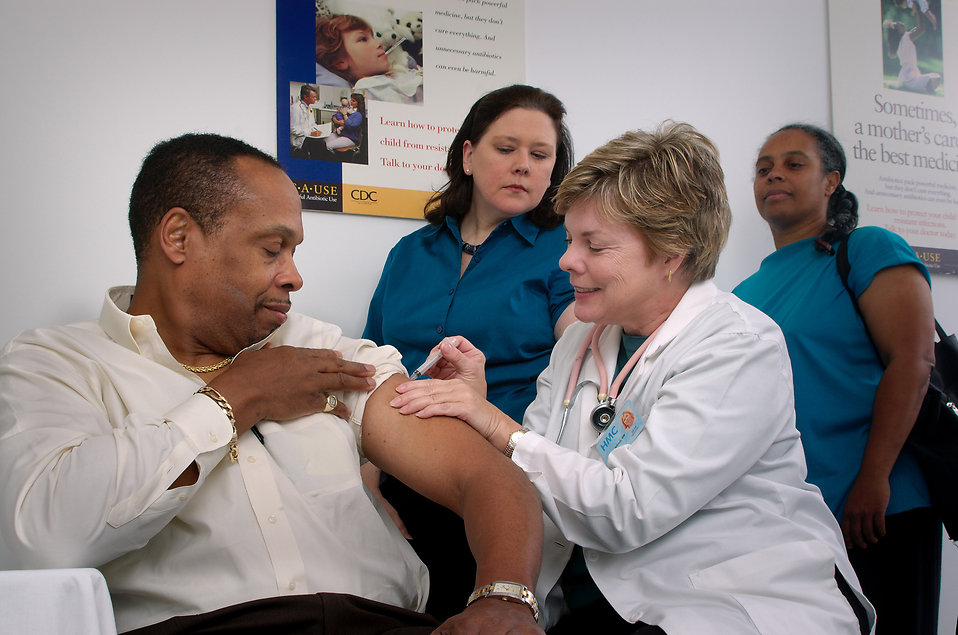A group of researchers in Australia investigated nurse practitioners’ use of standardized assessment tools to monitor the effects of antipsychotic medication. In their research, they found that only about a quarter of the nurses used such a tool and that those who did were more likely to feel supported by in their work. The results have implications for policies encouraging increased use of assessment tools – that is, if stakeholders build in processes that clarify their use as a responsibility, they are more likely to be used.
The researchers believe that side-effect monitoring is critical because of a) an increase in the use of antipsychotics, especially for off-label indications, b) findings that antipsychotics provide minimal improvement compared to placebo, especially in the long run and have negative side effect profiles, thus warranting a consideration of their risk-benefit profile, c) that side effects lead to medication non-adherence which has been linked to increased risk of relapse, rehospitalization, and self-harm, d) that symptoms of mental health conditions can mimic the side effects of antipsychotic medication, e) communication barriers on the part of service providers (who may not have the necessary assessment skills) or the patients (who may find side effects stigmatizing or whose ability to communicate side effects may be hindered by the illness or medication effects).
 Click here for a review of the withdrawal effects of antipsychotic medication by Mad in America
Click here for a review of the withdrawal effects of antipsychotic medication by Mad in America
The information on how these side-effect assessments take place is limited. In this study, the researchers “undertook a survey of Australian mental health nurses’ knowledge of side-effect assessment tools, attitudes towards the assessment of antipsychotic medication side effects and their confidence to identify and manage side effects.”
Questions in the survey were analyzed to measure two separate factors. Six questions were assigned to a factor called “system responsibility” (factor 1) and five were assigned to the second factor, namely “personal confidence” (factor 2). As the names indicate the former assessed the context the nurses were working in and the systems they had in place to encourage side effect monitoring, and the latter assessed nurses’ confidence in their own ability to monitor and measure antipsychotic-related side effects.
The results indicated that only about a quarter (26.5%, n=171) of nurses used an assessment tool. In terms of factor 1, even though a majority of the nurses agreed that the teams they worked on paid attention to side effect monitoring, they tended to disagree that systems were reliable for providing reminders to use the assessments or for providing clear communication about who was responsible for acting on antipsychotic medication side effects. For factor 2, overall, the nurses indicated a high degree of confidence in their ability to assess, monitor and manage side effects and about half “noted that they could monitor side effects without using assessment tools.”
Limitations of the study include a potential self-selection bias, that is nurses with more positive attitudes toward side effect assessment may have been more likely to volunteer as participants. Researchers also caution about generalizing findings outside the Australian clinical context. They concluded that “service responsibility” or the encouragement in systems to use tools predicted increased likelihood of them being used, but “personal confidence” did not impact this in any way. They believe that the high confidence ratings the nurses gave themselves may be unwarranted because of prior research that indicates that clinicians often underestimate side effects as well as the communication issues that might get in the way of accurate assessment.
Overall the researchers caution that the low use of standard assessment tools is likely leading to an underestimation of antipsychotic medication side-effects. In terms of intervening at the systemic level of “system responsibility” “. . . strategies should be implemented to foster the routine use of antipsychotic medication side-effect assessment tools, which would enhance the identification of side effects and improve clinical outcomes for mental health service users”, they conclude.
****
Stomski, N. J., Morrison, P., & Meehan, T. (2016). Mental health nurses’ views about antipsychotic medication side effects. Journal Of Psychiatric & Mental Health Nursing, 23(6/7), 369-377. doi:10.1111/jpm.12314 (Abstract)















My psychiatrist, who it was claimed “knows everything about the meds,” thought the adverse effects of his “bipolar” drug cocktails (drug cocktails known to create psychosis and extreme uncontrolled movements, via anticholinergic toxidrome poisoning) were “the classic symptoms of schizophrenia.” And the “bipolar” diagnosis in the first place was a misdiagnosis of the common symptoms of antidepressant discontinuation syndrome.
Someone really must teach the psychiatrists, and the psychiatric nurses, about the adverse effects of their drugs, the psychiatrists are completely deluded by their scientifically invalid, billing code “bible,” and apparently their own “delusions of grandeur.”
Report comment
What we need is for doctors, nurses, patients to resort to any other method of treatment besides psychiatric drugs!
At the top of the psychiatry news is a list of the top 10 psychiatry searches for 2016. At the top of the list of searches, in the number 1 position, is the search for Abnormal Involuntary Movement Scale. or AIMS. The AIMS test was developed in the 1970s. Why would anybody be searching for that? The involuntary movement this test was designed to detect is Tardive Dyskinesia. I do a news search for Abnormal Involuntary Movement Scale, and what do I get? A new drug is being developed reputed to lessen the severity of TD. There is even some mental health worker using noncompliance (you mention non-adherence) in one of them as a reason for the development of this drug. There is also much mention of the multi-fold increase in “mental illness” that has taken place in recent years, and especially the use of drugs in treating children and adolescents, with a corresponding rise in TD among that population. One thing, I don’t think such a drug is likely to improve outcomes because they’re talking mainly about treating the consequences of using neuroleptics long term, and we know long term is not good. In terms of relief for injuries received, there has always been a better way.
The better way I’m speaking of is the way of no injury. Reread my first sentence.
Report comment
The article reiterates for me what my eyes and ears have seen and heard . Nurse Ratched ,many of them are alive and well, in ever growing numbers as part of the team , one essential shock troop ingreedient of the compliance police, commanded by the criminal tyrannical pseudo scientific psychiatrists and many AMA doctors , all serving the FUBAR Eugenic Pharmaceutical Cartel owned by the Oligarchs intent on making money off of the great culling by first making sick the population and controlling the survivors within compliance as they themselves hide their own fear from themselves of an awakened population bringing justice to them in their hideouts.
Report comment
Agreed. Most mental death nurses are ignorant and uneducated about the poisons they are feeding to or injecting their poor “patients” with. And these are simply toxic poisons, not “medications”, with devastating effects on every organ and body system. People taking part in poisoing and sickening “patients” belong in prison, being forced to ingest the same toxins for 6 months or so, just so they “get it”.
Report comment
Just pointing out that there are no “side” effects, only effects.
Report comment
“c) that side effects lead to medication non-adherence which has been linked to increased risk of relapse, re-hospitalization, and self-harm”
Which means that drug effects lead to non-adherence.
Which means that drug effects are linked to increased risk of relapse, re-hospitalization, and self-harm.
I read some lead-headed reporting in the records of someone who was dropped from 150 Atenolol to 25 mg overnight, attributed to the patient’s pharmacy’s information including atenolol, 25mg/day, which is highly unlikely. More likely, the dingbat was told by the patient that she was on the drug, and assumed the dose was the lowest, given the age and frailty of the 108-pound patient. Dropping atenolol like that can cause extreme anxiety ad panic attacks. The lead-headed reporting was “Patient combative with staff. Patient wanted to get out of bed.” It’s pretty obvious that the correct telling is “Patient wanted to get out of bed. Staff combative with patient.” No mention was made of why said patient should have remained in bed if it were her wish to stand, given that the presenting complaint was a scalp laceration slightly over 1/2″ in length (.6″) that wasn’t bleeding, and that the thousands spent on scans and tests to figure out why the patient fell revealed nothing wrong with her health. The fall that caused the laceration is easily attributed to the crazy-high 150mg/day dosing of Atenolol. Had they been aware of her actual dosing, the patient might have been spared the iatrogenic hell of 6-point restraints while enduring Atenolol withdrawal. Nothing 5mg IM Haldol wouldn’t make worse, however, so naturally that was accomplished. Eff-word you, idiot, ignorant, sloppy nurses.
That patient was not me, but I could pen a slim volume called “Surviving Registered Nurses,” or “Nurses try to kill me ALL. THE. TIME.” The advice at the end would be to avoid nurses at all costs, and to resort to 6-point restraints and IM neurotoxins only when they are a danger to themselves or others. I regret to say that’s at approximately all the time. Just go on allnurses.com to find out what a bunch of self-important humanity-haters that profession has become.
Report comment
One thing is for sure about nurses, they don’t seem to be informed at all about the effects of the drugs that they’re told to give to the “patients”. For all of their education they are not educated or informed at all. I’ve not run into one that doesn’t believe in the “chemical imbalance” myth.
Report comment
I saw this in residential “treatment” homes for teens with behavior problems. The staff not only didn’t screen for side effects, they had not even been trained on what the side effects were. In one case, the therapist readily acknowledged that they never told the teens about the side effects because they were afraid the teens would then refuse to take the drugs (definition of “informed consent,” please?) One girl in this facility had a constant hand tremor, was taking FOUR drugs that cause involuntary movements (TWO “antipsychotics” and TWO “mood stabilizers), two of which specifically noted HAND TREMORS as an adverse effect. They told her that her hand shaking was because she was “nervous!” I was never quite so appalled in my sometimes quite appalling career working with kids. So no, this doesn’t surprise me one bit. Most doctors and facilities approach adverse effects with either minimization or complete denial. To actually screen for them would be most out of character for most facilities I’ve seen.
Report comment